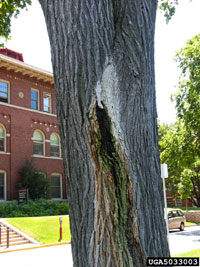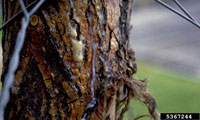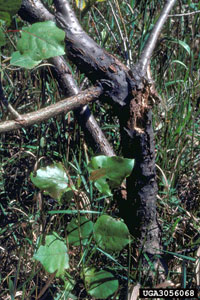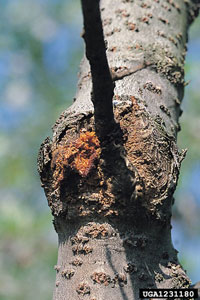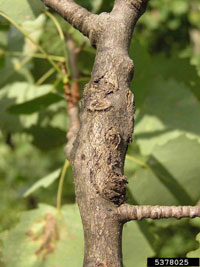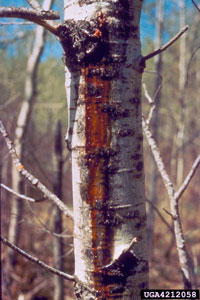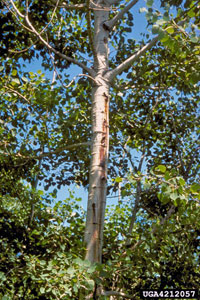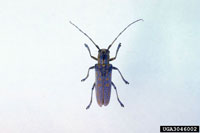Extension > Garden > Diagnose a problem > What's wrong with my plant? > Deciduous Trees > Poplar > Liquid seeping from wounds on branches/trunk
Poplar > Trunk/Branches > Liquid from wounds on branches/trunk
1 of 3
Wetwood or bacterial slime flux
Several species of bacteria
- Fluid may ooze or bleed out of openings in the bark and may have a yeast-like odor
- Streaks/columns of water-soaked bark discoloration on the trunk or branches that is gray to yellow-brown when dry and black to brown when wet
- Discoloration commonly starts at bark cracks, wounds, or branch unions
- Avoid wounding the tree
- Protect the tree from other stresses, especially soil compaction from vehicles or pedestrians
- More information on wetwood
2 of 3
Poplar and willow borer
Cryptorhynchus lapathi
- Frass pushed out of openings in wood; sap seeps from openings
- Trunks become crooked and misshapened with openings in bark
- Random sucker growth along deformed
- Damage most common on young trees and willow species; quaking aspen are not affected
- Larvae are C-shaped, cream-colored and approx. ¼ inch long
- More information on Poplar and willow borer
3 of 3
Poplar borer
Saperda calcarata
- Brown stain streak below holes formed by longhorned beetle under bark
- Holes in bark filled with stringy sawdust or at base of tree
below holes - Fully-grown larvae up to 1 1/2 inch long; creamy-white and legless
- More information on Poplar borer



